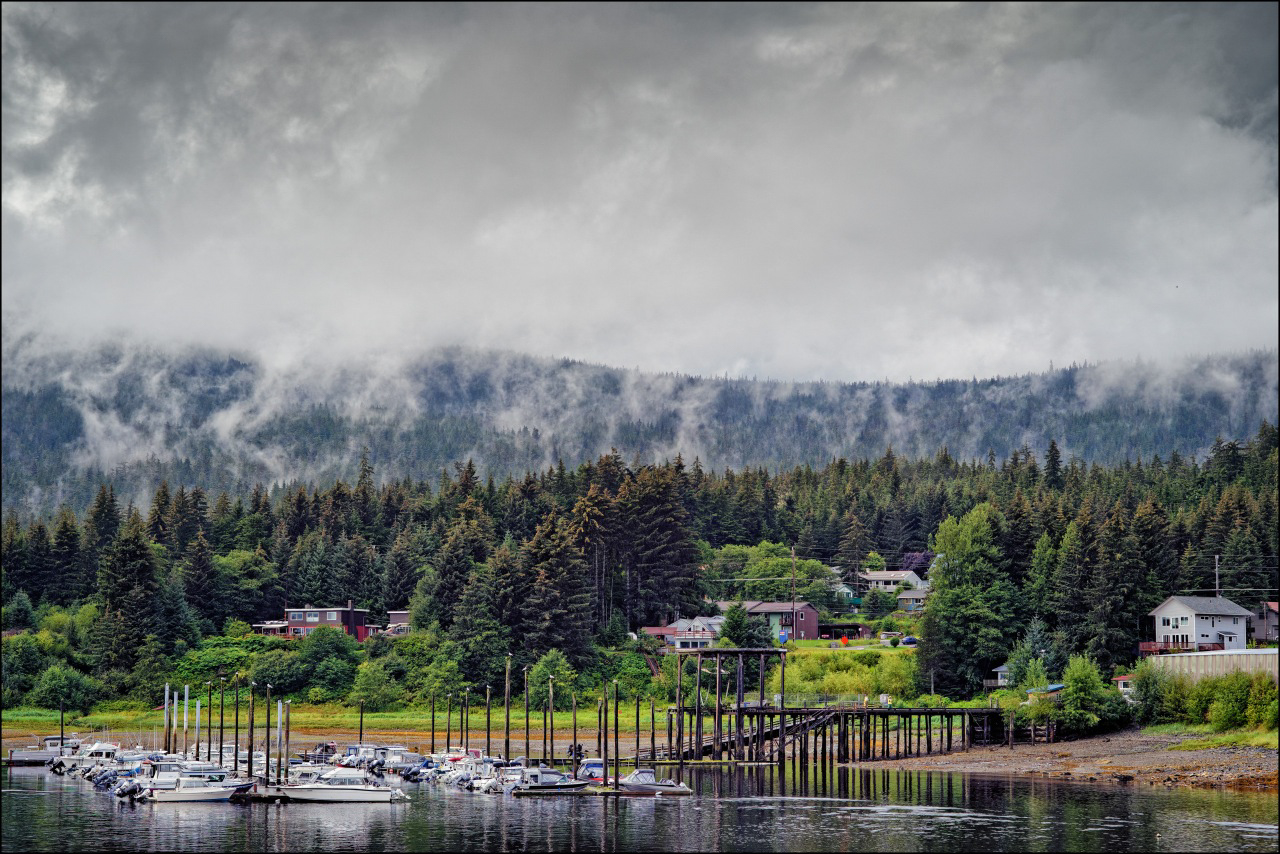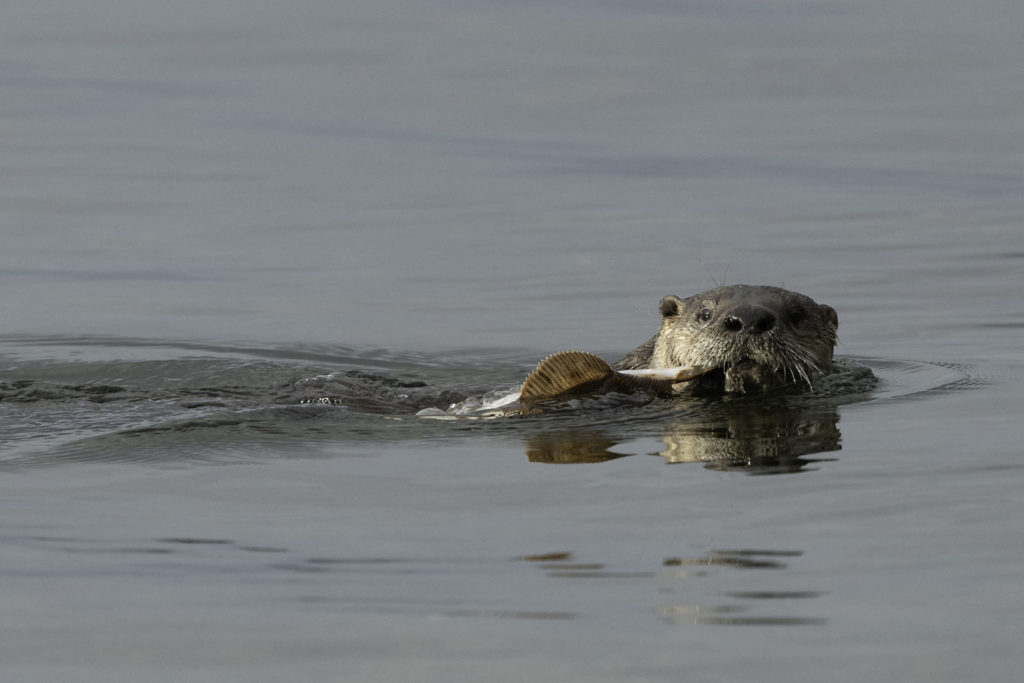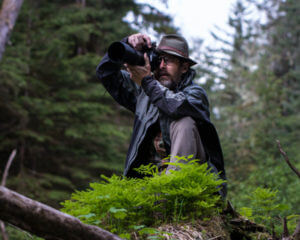Not My Job: The Work of a Local Guide in Juneau

I was scanning the shore line on a perfectly cloudy and cool summer day in Juneau, as our small whale-watching boat eased up to the dock. Inside the boat, my guests passed their cameras back and forth, sharing photos of humpback whales, sea lions, and glaciers. I stood in the door, lines in hand, ready to step ashore. When the boat was just a few feet from the dock, I saw them.
Thirty feet away, perfectly posed on a log in soft, natural light was a photographer’s dream. Five whiskered muzzles tipped with dark, wet noses pointed my way. Five sets of dark curious eyes stared at me.A family of five river otters stood ready to greet us.
I looked at the otters, then at my camera sitting across the boat from me, then at the fourteen photographers in the boat.
“Leave your bags,” I said. “Be ready. As soon as I secure the lines, file out on the dock. Don’t waste any time. They won’t stick around.”
I tied off the boat, and the paparazzi followed my instructions perfectly, making their way to the end of the dock. As shutters snapped, the otters stepped off the log and slid gracefully into the water.
My guests, bunched together on the end of the dock, blocking my view of the otters, but their gasps told me all I needed to know. The otters swam straight to the dock where they paused and looked up at the lenses, then arched their backs and dove with the kind of grace that is reserved for weasels in water, and disappeared beneath the maze of boats in Statter Harbor.

the sea otters, river otters spend much of their time on land, and when away from the coast, will often cover great distances between bodies
of water in search of food. The author photographed this otter with a flat fish in Tenakee Inlet, Chichagof Island, Alaska.
North American river otters (Contra Canadensis), commonly called land otters, can be found throughout most of Alaska. Unlike their larger cousins, the sea otters, river otters spend much of their time on land, and when away from the coast, will often cover great distances between bodies of water in search of food. The author photographed this otter with a flat fish in Tenakee Inlet, Chichagof Island, Alaska.
The encounter was over in…well, as long as it takes five otters to swim thirty feet. The wowed tourists turned back around, eyes aglow with amazement at this perfect ending to their trip.
I looked, again, at my camera resting in the boat, then smiled back at them. “Did you get the shot?” I asked.
A half hour later, as we parted ways at their cruise ship, my small group of fourteen guests were still talking about the otters and sharing photos from their Juneau shore excursion.
Back at the office, I was offered sympathy for missing the opportunity to photograph the otters myself. “Next time, you’ll get the shot,” someone said.
“No,” I told them. “Next time I will not get the shot, because getting the shot is not my job.”
My job, as a guide, is for my guests to get the shot, and that day, with a little mustelid help, I think I did my job well.
That day, fourteen guests stepped into Juneau—most of them on their first Alaska adventure, and had a magical moment they never expected, and as a guide, there is nothing more I could ever ask for.
About the Author: Jim Pfitzer is about to begin his second season as a guide for Gastineau, and his second year as an an Alaskan. He was born and raised in Chattanooga, TN, but has moved all over the country pursuing wild places and even wilder experiences. When asked about himself, Jim says he would rather paddle a canoe than drive a car, and prefers watching birds to watching television. “That about sums me up,” he says.


